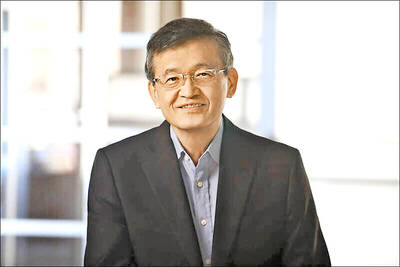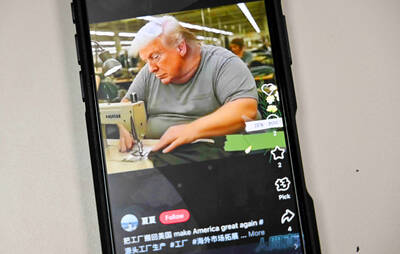Standard Chartered Bank yesterday slashed its economic growth forecast for Taiwan to 2 percent annually this year, from a previous estimate of 4.3 percent, due to plummeting external demand during the first half.
The forecast is higher than the Directorate-General of Budget, Accounting and Statistics’ projection of an annual growth rate of 1.56 percent announced on Friday last week.
Dwindling exports last quarter set headline growth back by 2.07 percent, after seeing a sharp reversal from the 2.59 percent gain recorded in the January-to-March period, Standard Chartered economist Tony Phoo (符銘財) said.
He said that a recent streak of weak export figures was partly distorted by falling prices.
“Taiwan export producers are at a tremendous disadvantage as they succumb to pressure from clients to slash prices, offsetting gains of declining commodity prices,” Phoo said.
In the first five months of this year, total exports in terms of volume increased 2.4 percent year-on-year, led by shipments of optoelectronics and precision equipment, which grew 12 percent.
However, China’s slowing growth momentum and lingering uncertainty surrounding the eurozone suggests that there might not be an immediate improvement in exports, leading to sub-par growth in the second half, Phoo said.
Despite external woes, favorable domestic indicators, such as a steady job market and increased consumer spending, have held up in the first half and are expected to continue improving in the second half.
In particular, retail sales are on track for another record year, while restaurant sales picked up last quarter after a slump that began late last year, he said.
“The economy is unlikely to slip into a technical recession in the third quarter,” Phoo said.
The almost 50 percent decline in global oil prices is likely to reduce overall import costs this year, leading to increased household spending as state-run oil and power companies comply with government policies urging them to pass on savings to consumers, he said, adding that spending is also likely to be boosted by gains in real wage growth.
Meanwhile, overall producers’ confidence has also held up, as reflected by leading indicators such as imports of capital goods, which Phoo said posted a strong 13 percent year-on-year rebound last month.
Phoo said the outlook remains positive on the recovery of the local technology sector in light of steady capital expenditure.
He also slashed projected inflation to minus-0.3 percent from a previous estimate of 0.4 percent and said that the central bank is expected to keep its benchmark rate at 1.875 percent for the remainder of the year.
Adjustments in interest rates are considered much less effective than changes in foreign exchange policy in weathering a slow growth period, Phoo said.

Intel Corp chief executive officer Lip-Bu Tan (陳立武) is expected to meet with Taiwanese suppliers next month in conjunction with the opening of the Computex Taipei trade show, supply chain sources said on Monday. The visit, the first for Tan to Taiwan since assuming his new post last month, would be aimed at enhancing Intel’s ties with suppliers in Taiwan as he attempts to help turn around the struggling US chipmaker, the sources said. Tan is to hold a banquet to celebrate Intel’s 40-year presence in Taiwan before Computex opens on May 20 and invite dozens of Taiwanese suppliers to exchange views

Application-specific integrated circuit designer Faraday Technology Corp (智原) yesterday said that although revenue this quarter would decline 30 percent from last quarter, it retained its full-year forecast of revenue growth of 100 percent. The company attributed the quarterly drop to a slowdown in customers’ production of chips using Faraday’s advanced packaging technology. The company is still confident about its revenue growth this year, given its strong “design-win” — or the projects it won to help customers design their chips, Faraday president Steve Wang (王國雍) told an online earnings conference. “The design-win this year is better than we expected. We believe we will win

Chizuko Kimura has become the first female sushi chef in the world to win a Michelin star, fulfilling a promise she made to her dying husband to continue his legacy. The 54-year-old Japanese chef regained the Michelin star her late husband, Shunei Kimura, won three years ago for their Sushi Shunei restaurant in Paris. For Shunei Kimura, the star was a dream come true. However, the joy was short-lived. He died from cancer just three months later in June 2022. He was 65. The following year, the restaurant in the heart of Montmartre lost its star rating. Chizuko Kimura insisted that the new star is still down

While China’s leaders use their economic and political might to fight US President Donald Trump’s trade war “to the end,” its army of social media soldiers are embarking on a more humorous campaign online. Trump’s tariff blitz has seen Washington and Beijing impose eye-watering duties on imports from the other, fanning a standoff between the economic superpowers that has sparked global recession fears and sent markets into a tailspin. Trump says his policy is a response to years of being “ripped off” by other countries and aims to bring manufacturing to the US, forcing companies to employ US workers. However, China’s online warriors